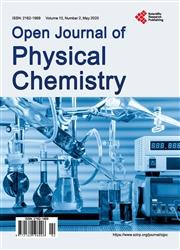Detecting Photoacoustic Signals of Sulfur Hexafluoride at Varying Microphone Positions
引用次数: 0
Abstract
Photoacoustic spectroscopy was used to test the photoacoustic properties of sulfur hexafluoride, an optically thick and potent greenhouse gas. While exploring the photoacoustic effect of sulfur hexafluoride, the effects of the position of the microphone within a gas cell were determined. Using a 35 cm gas cell, microphones were positioned at 17.5 cm, the middle of the gas cell, 12.5 cm, 7.5 cm, and 2.5 cm from the window of the cell. From the photoacoustic signal produced for each resonance frequency at each microphone position, the effects of acoustic pressure produced at each position on the signal recorded were observed. This is the first study done by experimentation with the photoacoustic effect to show that standing waves have different amplitudes at different microphone positions.在不同麦克风位置检测六氟化硫光声信号
光声光谱用于测试六氟化硫的光声特性,六氟化硫是一种光学厚且强效的温室气体。在探索六氟化硫的光声效应时,确定了麦克风在气池内位置的影响。使用35cm的气室,麦克风分别放置在距气室窗口17.5 cm、中间12.5 cm、7.5 cm和2.5 cm的位置。从每个麦克风位置每个共振频率产生的光声信号,观察每个位置产生的声压对记录信号的影响。这是首次通过光声效应的实验研究,表明驻波在不同的麦克风位置具有不同的振幅。
本文章由计算机程序翻译,如有差异,请以英文原文为准。
求助全文
约1分钟内获得全文
求助全文

 求助内容:
求助内容: 应助结果提醒方式:
应助结果提醒方式:


